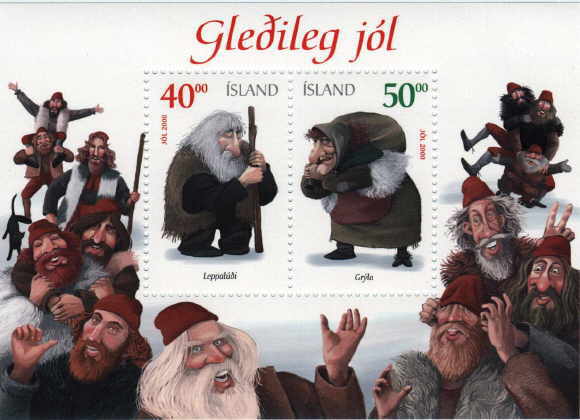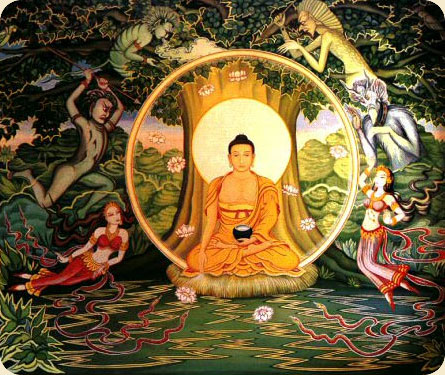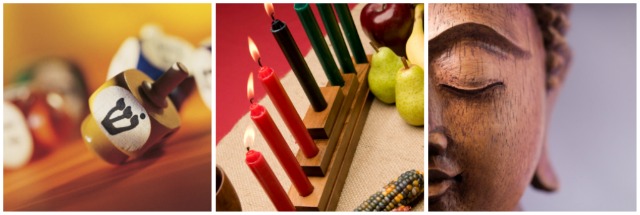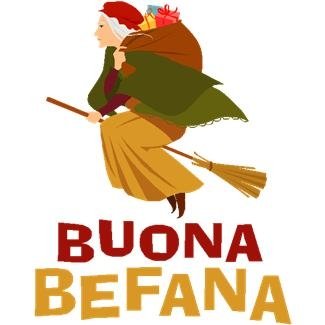Tis the season to celebrate – not just for us, but for many, many different cultures around the world. And they do so uniquely and with their own special charms.
In Iceland, for instance, the Christmas – or Jól – season starts December 24 and the stakes are high. (And starchy.) Children leave their shoes on windowsills, hoping for presents, but if you’ve been bad, you get a potato.
On Bodhi Day, December 8, Buddhists celebrate the time when Siddhartha Guatauma underwent a moment of enlightenment under the Bodhi tree at Bodhgaya in India. It calls for a day of meditation. Rice and milk also are savored as part of that tradition.
In Israel, eating doughnuts filled with red jelly called soofganiyot and potato pancakes called latke are a big part of Hanukkah. Spinning a four-sided top is another aspect of the tradition. Each side has a Hebrew letter, which together stand for a “great miracle happened here.” In the U.S., the game, called dreidel, even has a national tournament. ESPN does not cover it – not yet anyway.
Our world is shrinking – metaphorically speaking. Advances in technology and increasing globalization are giving us insights to places that were foreign to us in more ways than one before. And immigration continues to send streams of people to this nation, where they bring their own rituals and traditions. This month the Collaborative Services blog will explore and celebrate the world of holidays around the globe. It’s fitting, giving the growing diversity of our nation, which is a nation of immigrants, after all.
As we learned last month during our look into Elections, our nation will have a different populace come mid-century. For the first time, non-white people will out number whites, creating what’s called a majority-minority population. That’s the case already in San Diego and a number of other cities in the nation.
How will our culture be changed? Will it? Will Black Friday continue to attract hordes of shoppers hoping to land deals on whatever will be the big thing in 2050? Jetpacks maybe? Even flatter flat-screen TVs?
Christmas is widely celebrated in the U.S. It is celebrated as a holiday for some and as a holy day for others. According to this 2010 Gallup Poll, 95 percent of Americans celebrate it, including 80 percent of non-Christians. Even some atheists celebrate it.
The holiday is also celebrated in other parts of the world, particularly where the Roman Catholic religion is widely practiced, such as Ireland, Mexico and Italy. It’s even spreading to other nations, such as China, where Christmas displays can be found in stores in December.
Just about every nation has a unique way of celebrating Christmas. In Cuba, there’s a huge street carnival. In Italy it is La Befana, the Christmas witch, who leaves gifts. In Mexico, the Three Wise Men leave presents. To learn more about how nations around the world celebrate the Christmas holiday click here.
These celebrations have deep roots in their respective cultures. But what happens when new immigrants – used to celebrating in their own fashion – come here and the holidays approach? Over time, do they continue with their own traditions or dispense with them or combine theirs with ours? Think of your own holiday celebrations. Do you still incorporate traditions from your family’s cultural heritage and its traditions?
This month, we celebrate the range of ways to celebrate the end of one year and beginning of another. We will also talk to an organizer of December Nights, a San Diego celebration that highlights our community’s diversity during the holidays. So here’s hoping you join us as we go on a holiday parade, exploring this most wonderful time of year.
Mike Stetz, Senior Writer
Collaborative Services, Inc.






Recent Comments